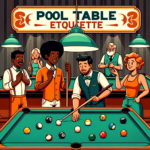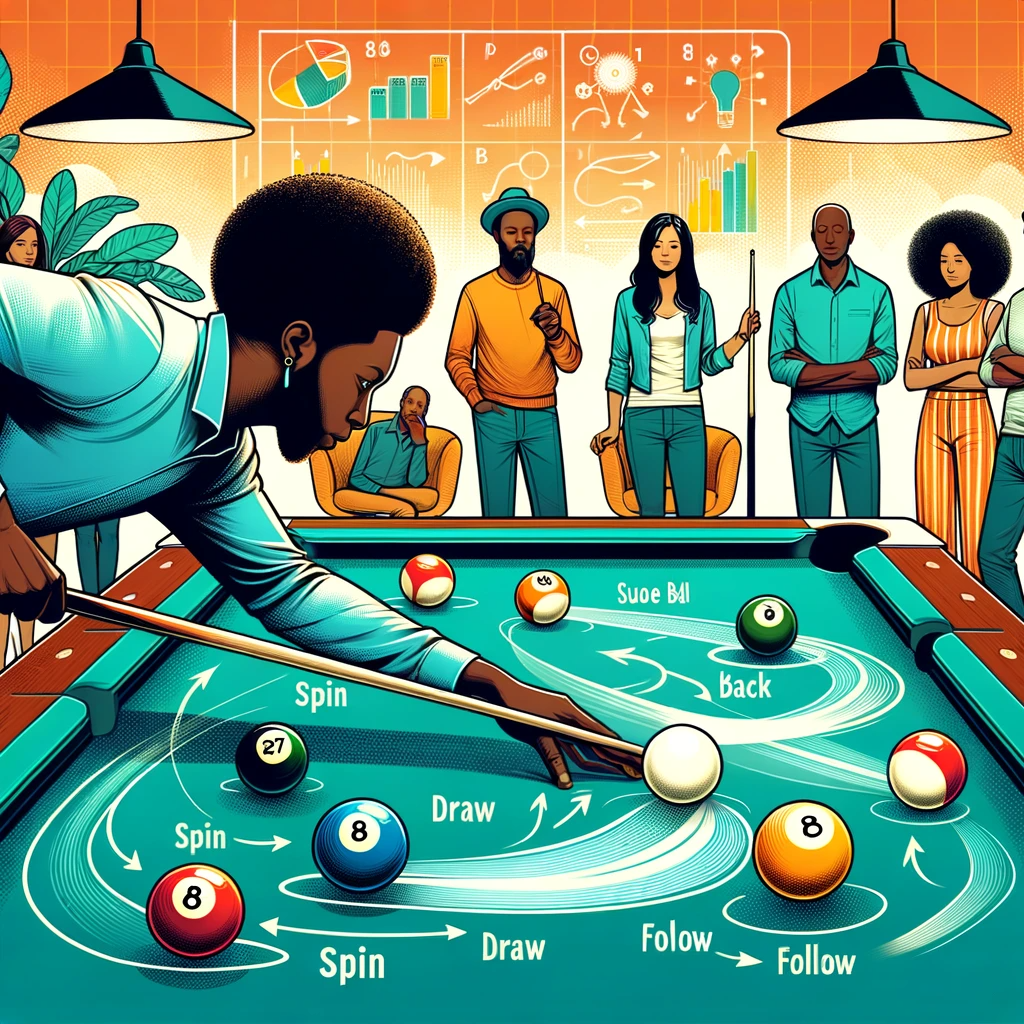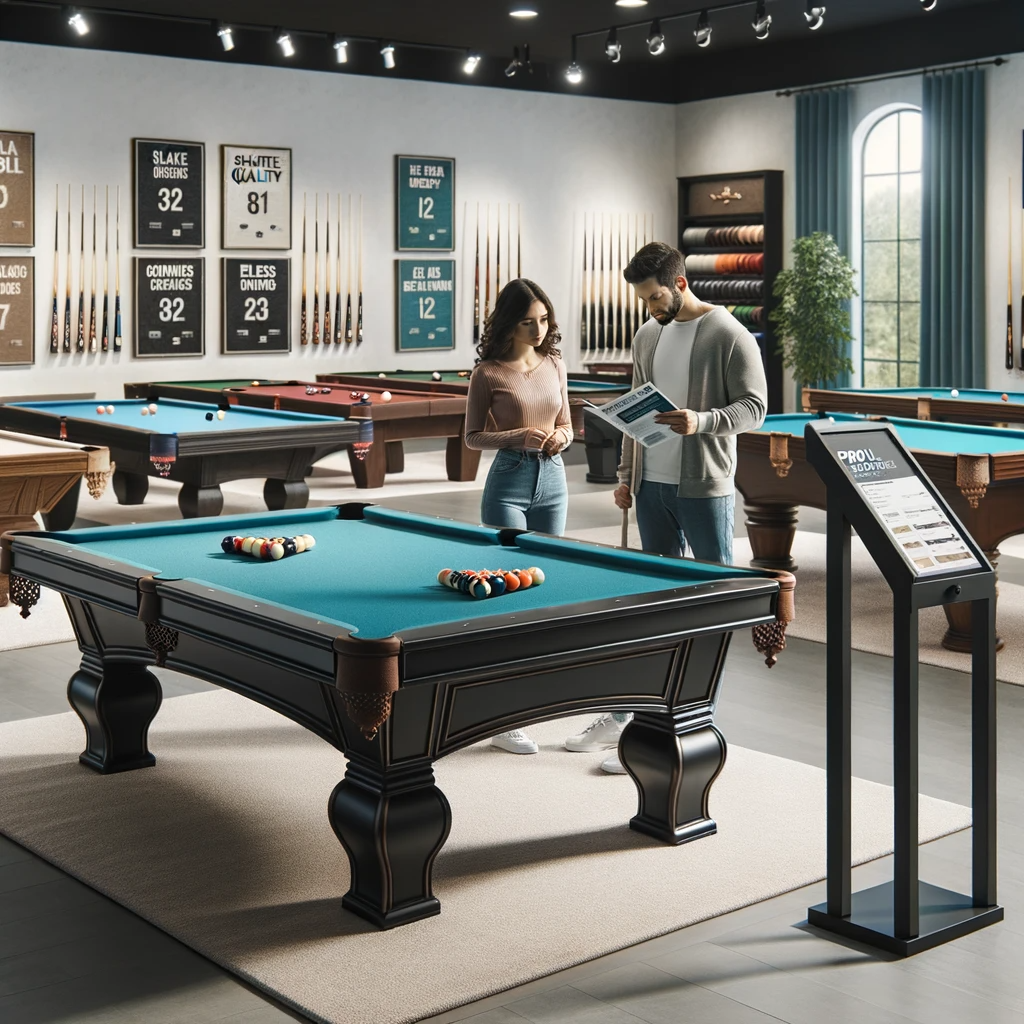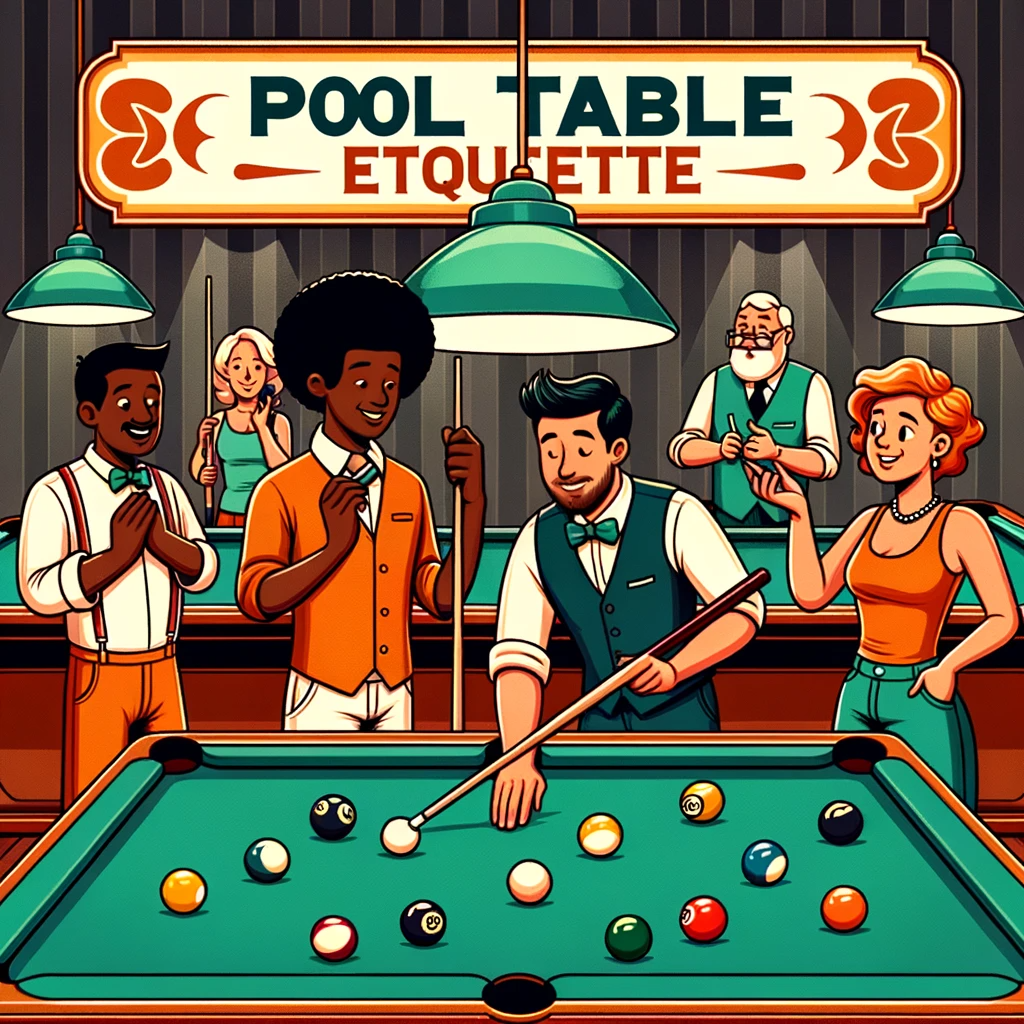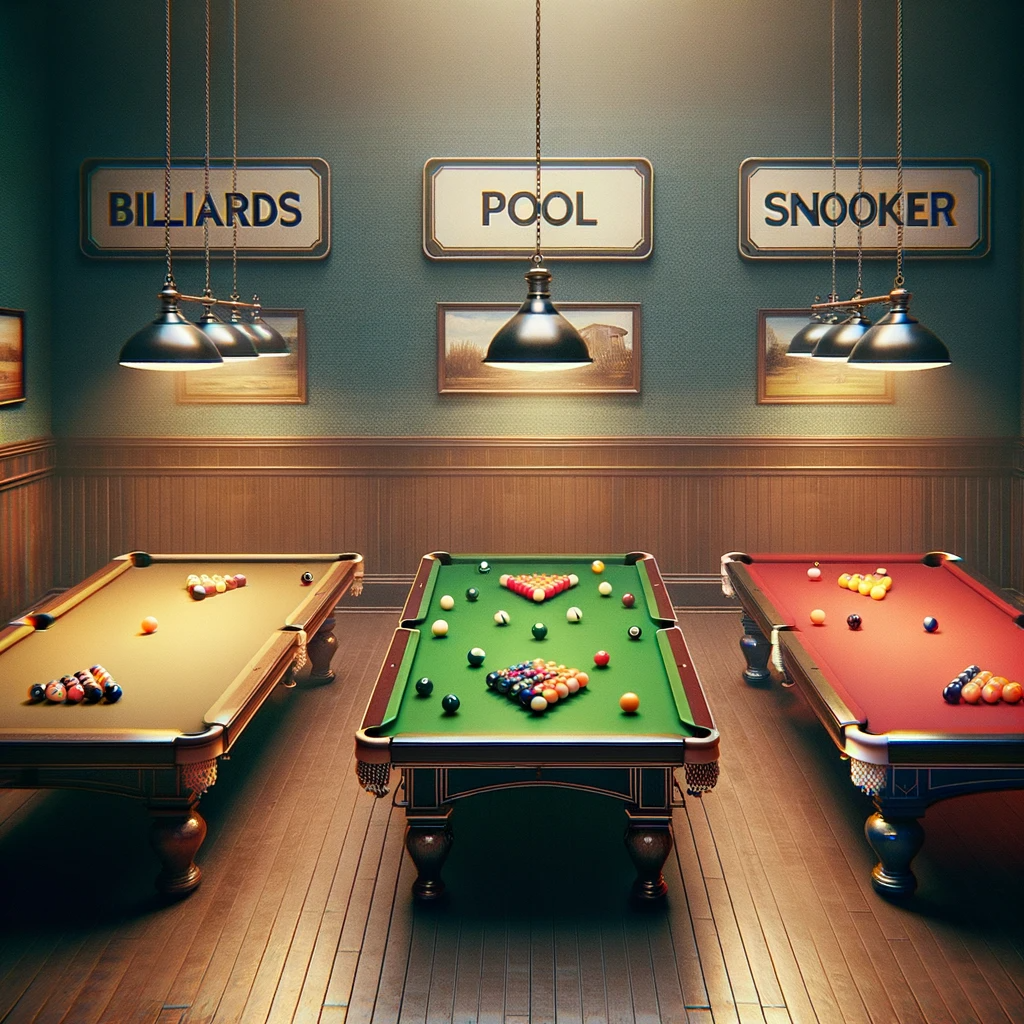Introduction
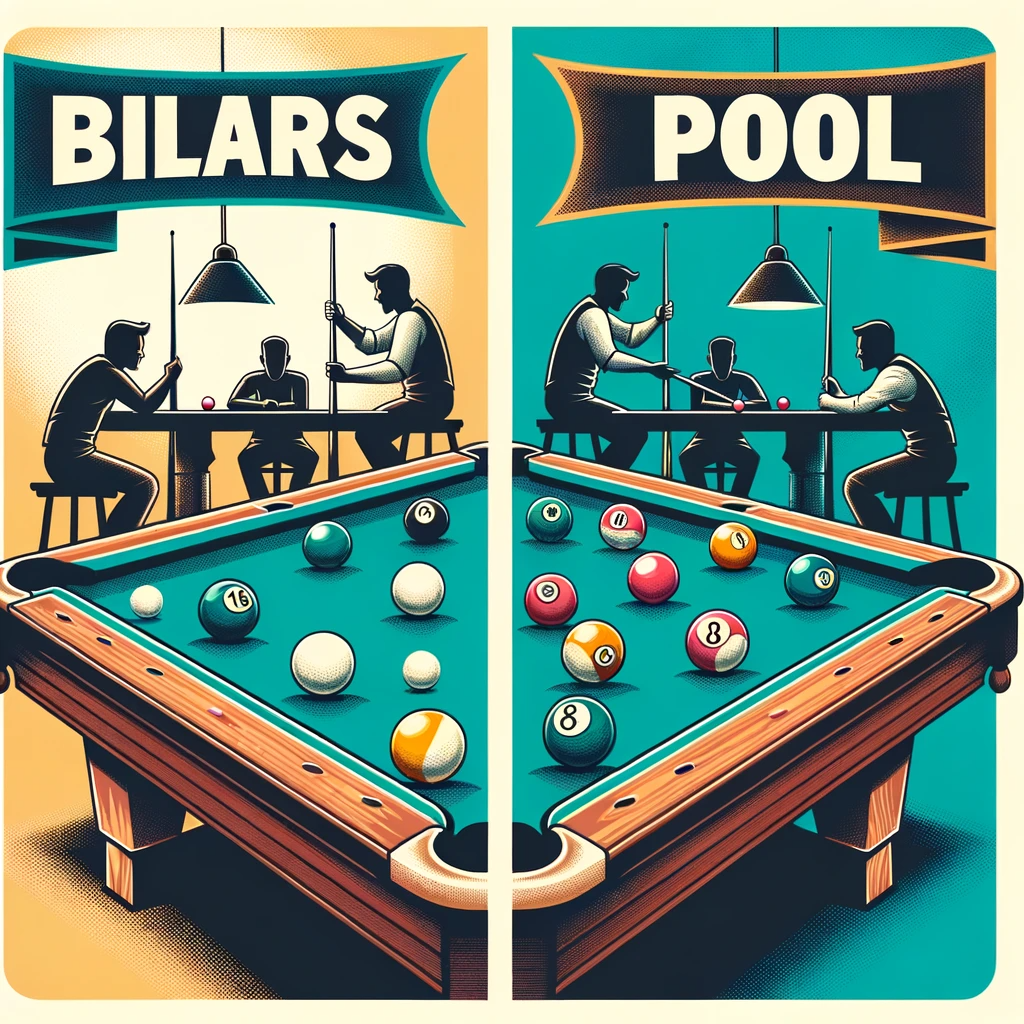
Billiards and pool are two popular cue sports that have captivated players and fans all over the world.
A World of Cues, Balls, and Tables
Understanding the differences between billiards and pool is crucial for enthusiasts and players alike. The brief overview of billiards reveals a sport with roots dating back to ancient times. Ancient Egyptians and Greeks enjoyed early forms of billiards, which evolved throughout the Middle Ages in Europe.
On the other hand, pool emerged in the 19th century with its development in America and England, gaining popularity among various social classes. The importance of understanding these differences cannot be overstated.
While both sports involve hitting balls with cues on a table, variations in equipment, rules, game objectives, scoring systems, and strategies set them apart. Without a clear comprehension of these distinctions, confusion may arise when engaging in conversations or participating in games within these cue sports communities.
Unraveling the Distinctions
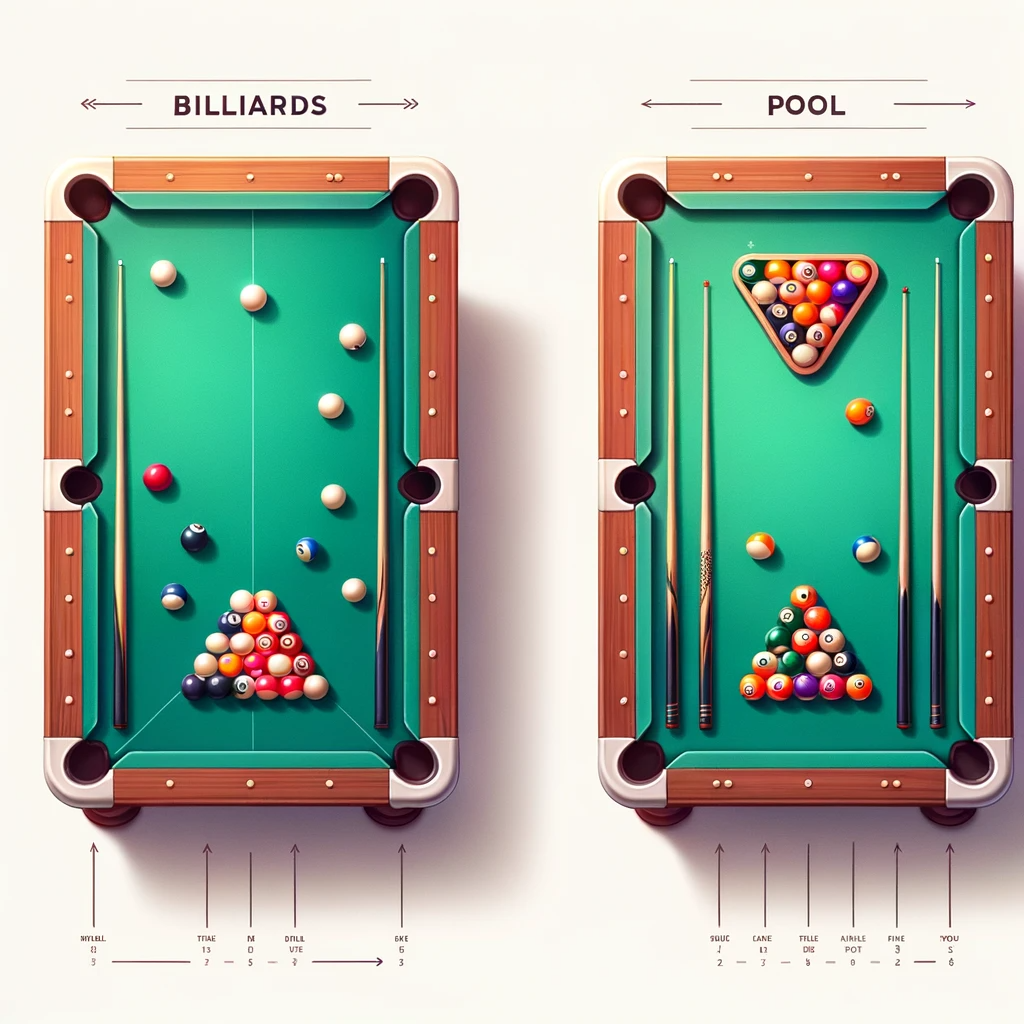
Intriguingly enough, each sport boasts its own unique set of equipment specifications that differentiate it from the other. Billiards employs a standard set of equipment consisting of cue sticks crafted from various materials such as wood or carbon fiber. These sticks vary in length, weight distribution along their shafts for balance during shots.
Pool cues also come in different lengths but may differ slightly from billiard cues due to factors like tip diameter variations and overall weight distribution preferences. Meanwhile, billiards employ specific sets of balls with unique sizes (typically around 2-1/4 inches) made from materials like ivory or synthetic resins such as phenolic resin for durability.
Each ball is usually colored distinctively to allow players to discern between them easily. Comparatively speaking, pool uses its own set of balls that also come with their differences when compared to billiard balls.
Pool balls are typically slightly larger (usually around 2-1/4 to 2-3/8 inches) and are often composed of materials like plastic or polyester resin. These balls are also numbered and can be solid or striped, depending on the game being played.
Moreover, tables for billiards and pool possess dissimilar dimensions, sizes, and pocket configurations. Billiard tables are typically larger than pool tables, with standardized lengths of 9 feet, while pool tables can vary in size ranging from bar-sized ones to official tournament-sized ones measuring 9 or 7 feet.
Understanding these distinctions in equipment specifications will provide players with the knowledge necessary to navigate and excel in their respective games. By grasping the nuances between billiards and pool cues, balls, and tables, players can make informed decisions when selecting the appropriate equipment for their preferred cue sport.
Origins of Billiards in Ancient Times
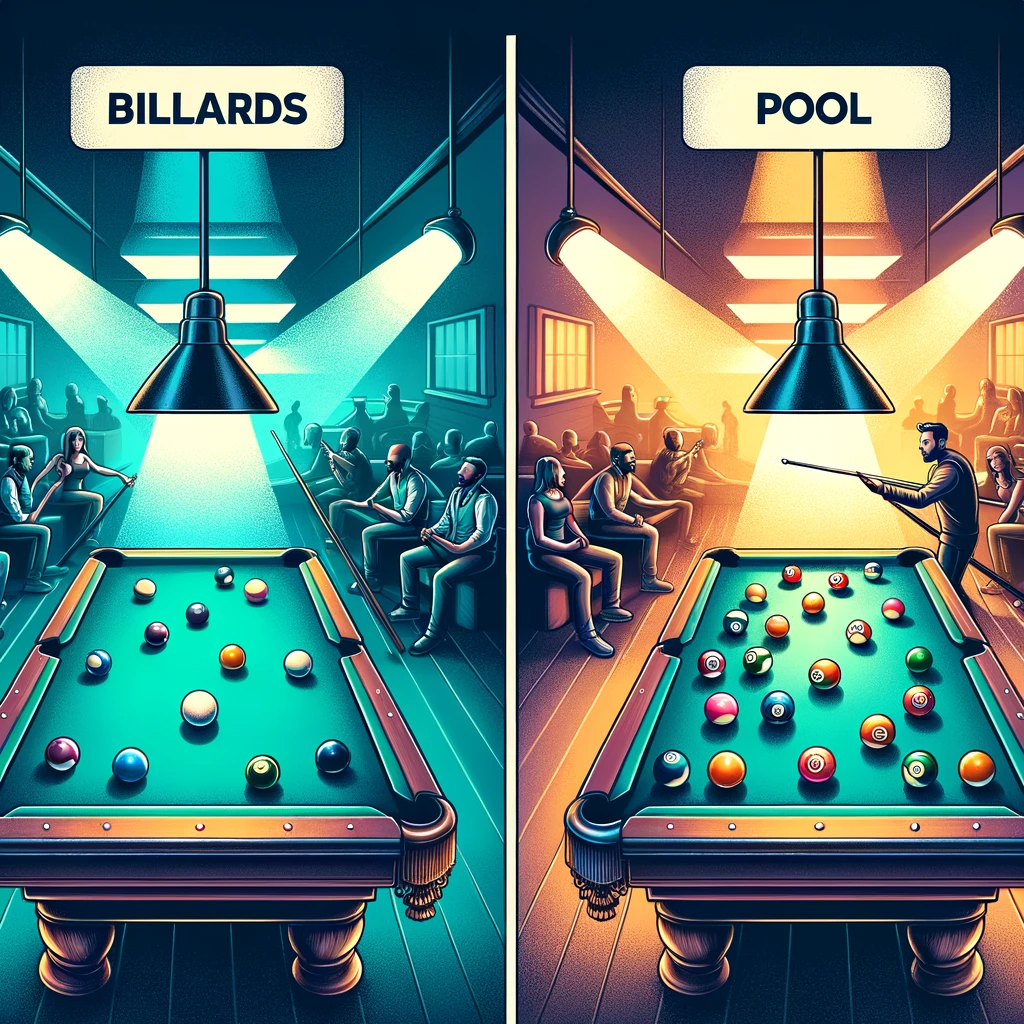
Billiards originated in ancient times. Ancient Egypt and Greece can be traced back as the birthplaces of billiards. During the Middle Ages in Europe, billiards experienced significant evolution.
The Emergence of Pool in the 19th Century
Pool emerged in the 19th century. Development of pool occurred both in America and England. Pool gained popularity among different social classes.
Billiards Equipment and Table Specifications
Cue sticks:
Length varies between 57 to 59 inches.
Weight typically ranges from 17 to 21 ounces.
Materials used include wood, such as maple, ash, or hickory, and sometimes reinforced with fiberglass or carbon fiber for added strength.
Billiard balls:
Size is standardized at 2 1/4 inches in diameter.
Composition commonly includes phenolic resin or polyester for durability.
Colors used are usually white for the cue ball and a combination of solids (numbered balls) and stripes (for distinguishing between players).
Table dimensions:
Length of a billiards table is typically around 9 feet.
Width is approximately half the length.
Pocket sizes are commonly around 4.5 inches wide.
Pool Equipment and Table Specifications
Cue sticks:
Variations in length allow for personal preference; common lengths range from 48 to 58 inches.
Weight can vary between cues, but it often falls within the range of 18 to 21 ounces.
Tip diameter also varies based on player preference, with popular sizes being between .50 inches to .60 inches.
Pool balls:
Size is similar to billiard balls at around 2 1/4 inches in diameter.
Composition differs as pool balls are often made of high-quality polyester material.
Solid-colored balls are numbered from one through fifteen, while striped balls have numbers but also feature a stripe pattern for easy identification.
Table dimensions:
Bar-sized tables are smaller than tournament-sized ones, usually measuring around seven feet in length.
Tournament-sized tables have stricter specifications at nine feet in length.
The details provided above offer insights into the specific equipment used in both billiards and pool games. By understanding the variations in cue sticks, ball compositions, and table dimensions, players can better adapt their skills and strategies to each game’s unique requirements.
Game Variations
Billiards game variations
Carom billiards (three-cushion) layers aim to score points by hitting their cue ball and making it contact three cushions before striking the opponent’s ball.
-Scoring is done without involving pockets, relying solely on the number of successful caroms.
Strategies involve calculating precise angles and using English (spin) on the cue ball to control its path.
Snooker billiards
Different from traditional billiards, snooker uses 22 balls with various colors and point values.
The initial set-up involves placing the colored balls in a specific formation on the table.
Players aim to pocket specific colored balls in a particular order for maximum points.
Pool game variations
Eight-ball pool
Objective: Players strive to pocket all either solid or striped balls followed by sinking the black eight-ball to win.
Rules: Each player is assigned a set of seven balls, either solids or stripes.
They must legally pocket their designated group first and then attempt to sink the eight-ball without committing any fouls.
Conclusion:
In exploring the differences between billiards and pool, we have delved into various game variations. Carom billiards challenges players’ skills in scoring points through intricately calculated angles without relying on pockets.
Snooker offers a unique set-up and rule system that adds complexity to traditional billiards. In contrast, eight-ball pool provides an exciting objective of skillfully pocketing specific sets of balls before aiming for victory with the black eight-ball.
Regardless of which variant you enjoy playing, both billiards and pool offer endless opportunities for strategic thinking, precise execution, and thrilling competition. So grab your cue stick and embrace these engaging games that have captivated players around the world for centuries!


